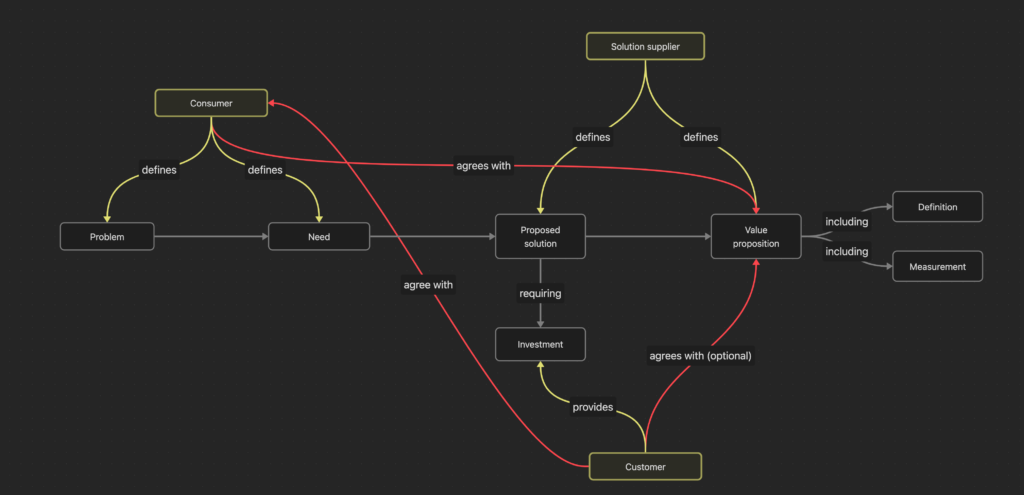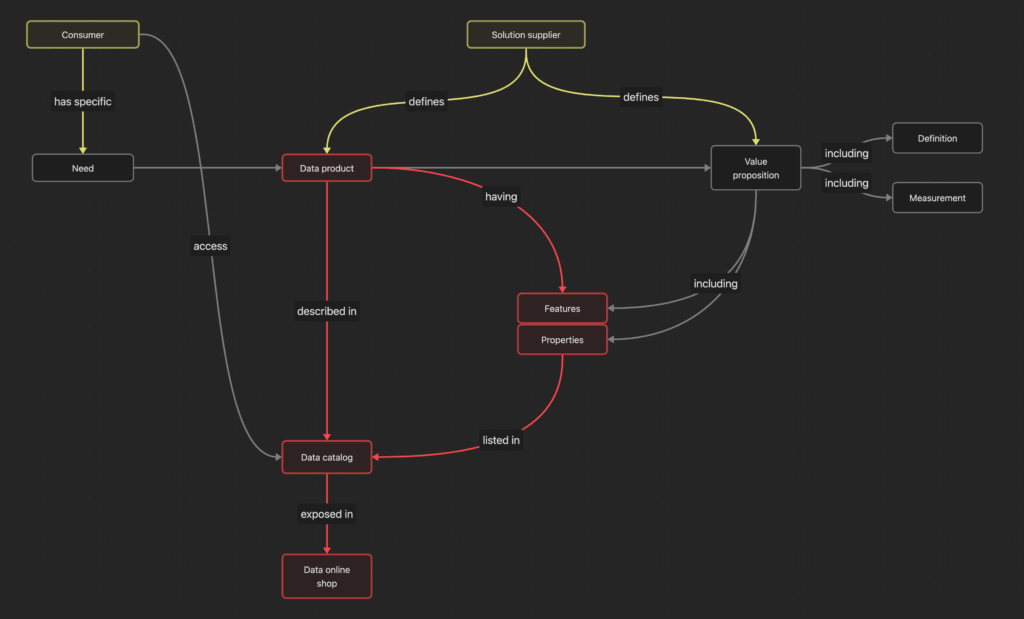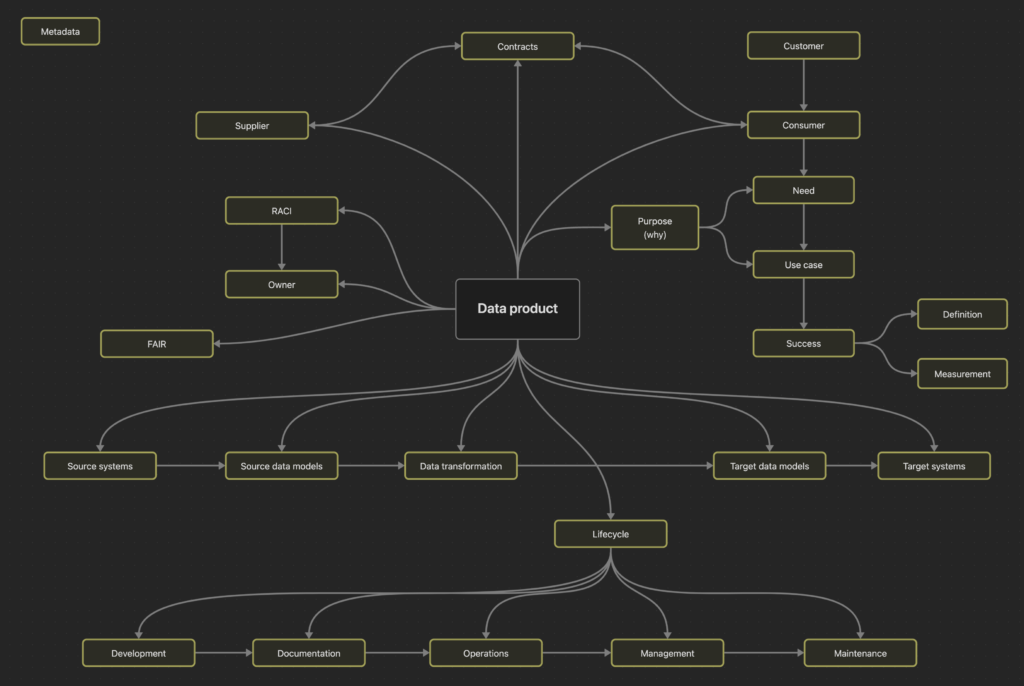Product, Consumer, Customer and Supplier
A product is the result of a production or manufacturing process designed to meet specific consumer needs and is typically offered for sale.
A consumer is the end user of a product or service, although they may not have purchased it.
A supplier is the individual or organization that provides goods, products, or services.

The added-value of a product should satisfy specific consumer needs. This value must be commonly understood among the consumer, the customer, and the supplier, emphasizing the importance of providing all relevant contextual elements necessary for value definition and estimation.

A customer purchases a product or service but may not be the end user.

Business Value and Customer Centricity
Now, is added-value always defined by customer needs?
The customer-centric approach to product design prioritizes understanding and addressing customer needs, preferences, and pain points and values. Proponents argue that this approach leads to products that better resonate with target audiences, resulting in higher customer satisfaction and market success.
A non-customer-centric approach, often associated with visionary innovators, operates on the principle that customers do not always know or be able to articulate what they truly want or need, especially in the realm of technology. Customers may lack the imagination or technical understanding to envision groundbreaking solutions until they’re presented with them.
Catalog
Sometimes, consumers may need more specific needs or a clear understanding of the products that could address their problems.
This is particularly evident in the digital realm, where rapid technological advancements can overwhelm consumers, making it difficult to keep up with new potential solutions (products or digital).
As a result, there is a need for a catalog that presents available products or services in a standardized manner. The descriptions of catalog items should offer sufficient detail for consumers to clearly understand product added value.
Digital solutions
A digital solution is a logical entity defined by concepts, relationships, and rules, independent of any specific technology. It does not rely on physical hardware or software components and can take the form of either a product or a service.
Similar to any product, a digital product results from a production process aimed at fulfilling specific consumer needs, such as a data product.
In response to these needs, digital experts (producers or suppliers) will deliver solutions in various formats, including software applications, dashboards, reports, visualizations, machine-learning models, recommendation systems, and other artifacts that integrate data and logic.
Data products
A data product is a particular type of digital solution composed of two components:
– A data set
– Metadata (information about the data set and its context)
The data set is an aggregation of data typically sourced from various trusted systems (IT records) and organized to meet specific consumer requirements.
Metadata provides contextual information that clarifies and enhances the understanding of the data set (refer to Business Contextualization). For instance, the features and properties of a data product to be published in a data catalog.

Data products metadata
Metadata that defines a data product is crucial. It must accurately and comprehensively describe the data product so that consumers can understand its nature without needing to access the data directly.
Additionally, metadata should guarantee the product’s quality (similar to food products), providing provenance and traceability throughout the product’s lifecycle.
Many more can be added as indicated below.

